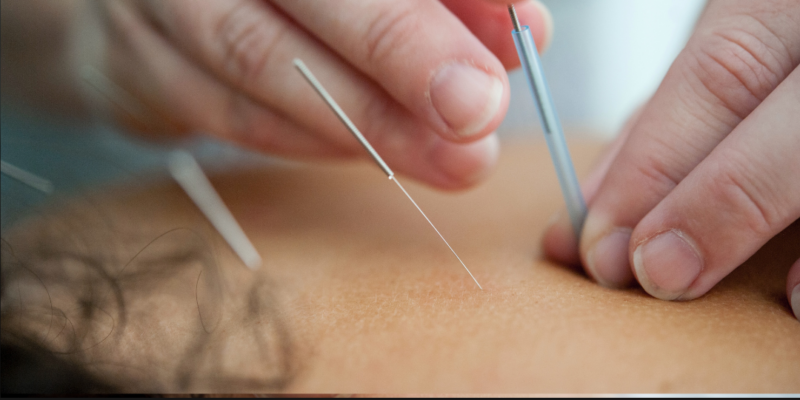Carpal Tunnel Syndrome and Thoracic Outlet Syndrome are two common issues that affect many people. Both cause pain, numbness, and weakness in the arms and hands. Serious cases can cause serious pain throughout the neck, shoulders, and arms. People affected by mild cases or the early stages of these syndromes often have poor circulation to the hands, causing the hands to be abnormally cold, and many will find that their hands fall asleep at night.
Carpal Tunnel Syndrome vs. Thoracic Outlet Syndrome
Carpal Tunnel Syndrome and Thoracic Outlet Syndrome are often caused by similar issues. The brachial plexus is made up of five nerves including the median nerve and the ulnar nerve. The brachial plexus travels through the two anterior scalene muscles located towards the front of the neck, under the collar bone, and down the arm to the fingers. Carpal Tunnel Syndrome is caused by compression of the median nerve, which innervates muscle tissue in the thumb, the index and middle fingers, and half of the ring finger. Thoracic Outlet Syndrome is caused by compression of the ulnar nerve which innervates the pinkie finger and the other half of the ring finger. The compression of either nerve can occur anywhere from the neck all the way down to the fingers. Common areas for this impingement are in the neck and underneath the collarbone. The subclavian artery runs alongside the brachial plexus and is often impinged in the same areas.
The Typical Western Treatment:
Many doctors will prescribe physical therapy to strengthen shoulder movement, improve range of motion and promote better posture. This part of the treatment is great for clients and often produces long-term relief from these syndromes.
Other treatments include surgery and the prescription of pain medication and blood thinners. The prescription of pain medication and blood thinners can relieve the symptoms of these problems. This is called allopathic medicine. Allopathic medicine aims to suppress the symptoms of a disease or syndrome while ignoring the causes. This treatment does not produce long-term results.
Typical surgical procedures involve cutting muscles to make extra room for the outlet, bypass surgery to reroute blood around the impingement, and removal of either a portion of or an entire cervical rib. You read that correctly, they will actually remove one of your RIBS.
Surgery treating these syndromes is found to be successful in between 50-80% of patients. Of those who find surgery successful, 5% will have symptoms return later on.
Risks of Carpal Tunnel Surgery
Any surgery involving anesthesia also involves risks. While uncommon, local anesthesia can be absorbed into the bloodstream causing systemic toxicity which may significantly affect your breathing, blood pressure, heartbeat, and other bodily functions. Regional anesthesia is injected into a nerve, a bundle of nerves, or into the spine. In case of nerve damage, you may experience persistent numbness, weakness, and pain. The risk of infections, damage to nerves or arteries, and long-term muscle weakness. Post-surgical scar tissue will often develop in the area and will restrict nerve function and blood flow, thereby negating any benefits the surgery may have had.
When muscles are cut in order to make more room for the thoracic outlet, an incision is often made to the pectoral muscles and to the serratus anterior muscle. Pectoralis minor and serratus anterior both assist in respiration by helping to expand the rib cage. The cutting of these muscles can result in long-term breathing issues. The removal of a section of or an entire rib can compromise your posture and interfere with the structural integrity of your body.
MORE SURGERY. These surgical procedures may lead to complications with arteries, including the carotid artery. The carotid artery provides blood to the brain and face. I really enjoy having healthy blood flow to my brain and face. If the carotid artery becomes restricted, angioplasty (widening the artery) or carotid surgery may be performed. The risks of this surgery include blood clots, bleeding in the brain, brain damage, increased risk of heart attack and stroke, and long-term blockage of the carotid artery.
The Holistic Carpal Tunnel Treatment:
Massage therapy, chiropractic care, and acupuncture are all very effective, holistic, non-invasive treatments for carpal tunnel syndrome and thoracic outlet syndrome. Massage works to loosen the soft tissue from the neck to the fingers that is likely causing the impingement. By loosening the muscles and fascia, the body is allowed to move towards a more ideal posture, allowing proper nerve function, healthy blood flow, and the feeling to return to your hands! Massage is incredibly effective for healing these syndromes and many clients will find relief and positive results after the first treatment. Using complementary therapies in conjunction with massage is recommended. A chiropractic adjustment can help to put your body back into a comfortable posture. Acupuncture helps to restore the natural energy flow of qi in the body and alerts the body to problematic areas so that you can heal yourself.
Traditional healthcare modalities (including chiropractic, massage, and acupuncture) have been around for centuries. They are time-tested, safe, and effective ways to heal the body. They involve no dangerous side effects and are both safer and cheaper than surgery. Holistic healthcare is the way to go.
Help for Carpal Tunnel Syndrome in Parker CO
If you are struggling with arm pain, weakness, the “tingles” in your hands or having your hands fall asleep at night, come in and check out our wellness center, right here in the heart of downtown Parker CO.







